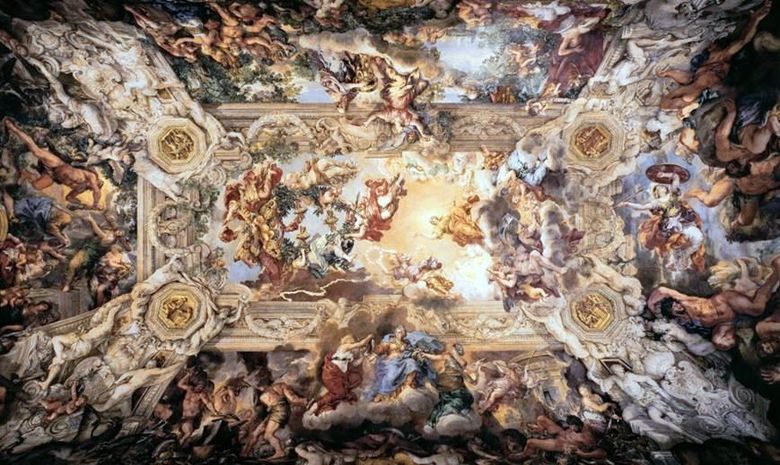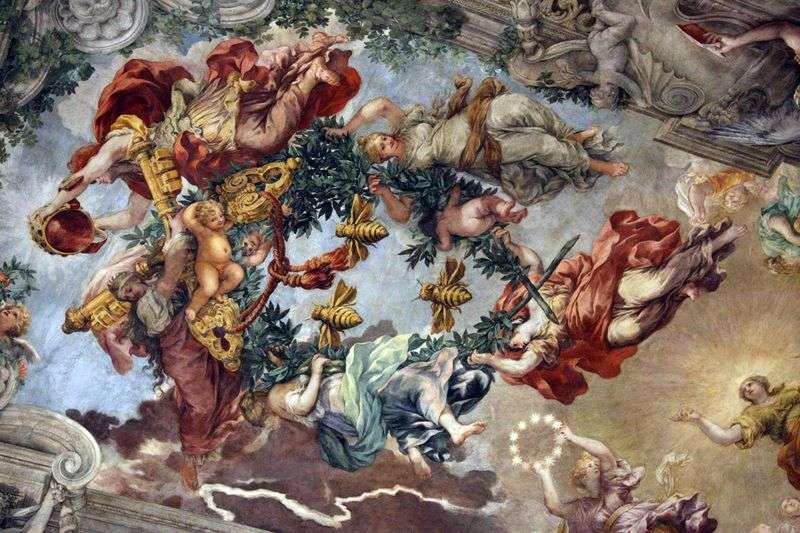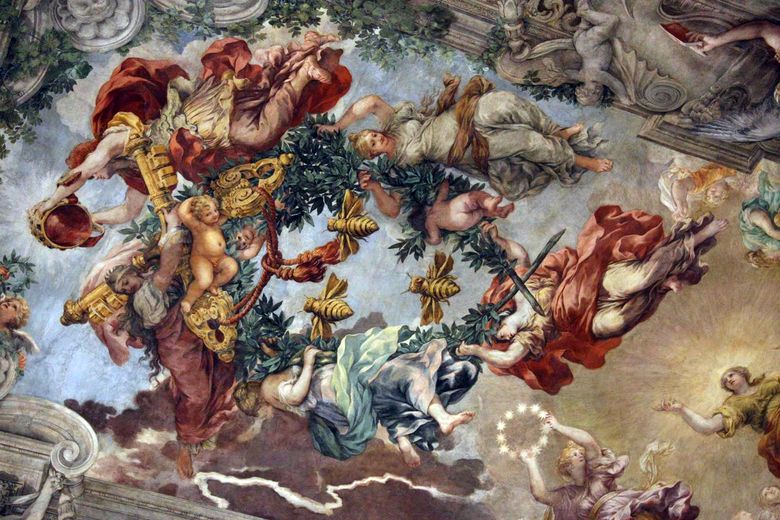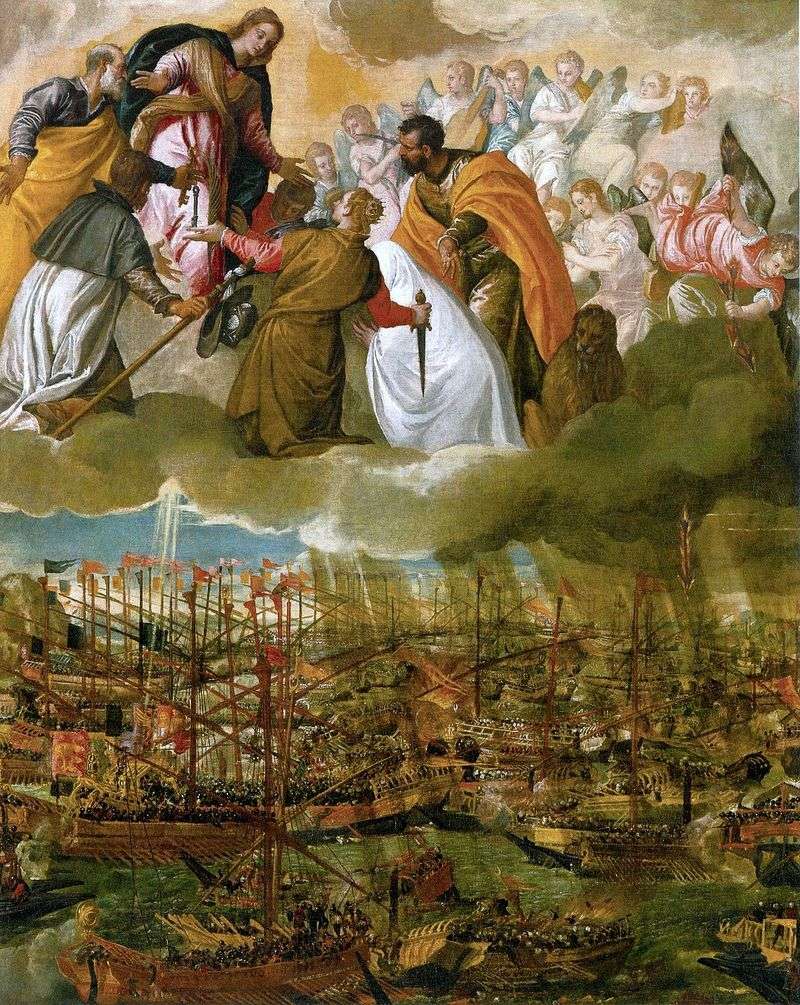
“Allegory of Divine Providence” – a masterpiece of fine art, which demonstrates the reception of trompley, creating a deceptive effect of the volume of the work. The painting was created by Pietro da Cortona, in order to decorate the large ceiling of the house of Barberini.
This painting, emphasizing the architectural features of the room and creating the illusion of “open walls” – one of the greatest frescoes of the Roman High Baroque, ordered by Pope Urban VIII. The composition demonstrates the apogee of papal authority and influence. Pietro da Cortona was a pupil of an outstanding Florentine painter, with whom he traveled to Rome, around 1612, where a number of acquaintances helped him secure the patronage of the pope.
In the central part of the composition, which shows the secular celebration of the papal family, you can see a swarm of bees – this is a reference to the family coat of arms. Below is Minerva, the goddess of wisdom. She overthrows the giants, who dare to challenge the inhabitants of heaven, which symbolizes the security of Barberini. At the top of the composition, the author emphasizes the high values and dignity of the family, also using mythological subjects.
Select a few stories and to the extent they are developed Cortona helped and the architectural feature of the ceiling. Like the work of Michelangelo in the Sistine Chapel, the master paints the cornice, represents the heroes in dynamic poses, and also shows the volume of powerful figures.
 Allégorie de la Divine Providence – Pietre da Corton
Allégorie de la Divine Providence – Pietre da Corton The Triumph of Divine Providence by Pietro da Cortona
The Triumph of Divine Providence by Pietro da Cortona Le triomphe de la Divine Providence – Pietro da Cortona
Le triomphe de la Divine Providence – Pietro da Cortona Alegoría de la Divina Providencia – Pietre da Corton
Alegoría de la Divina Providencia – Pietre da Corton Rural landscape overlooking the castle of Gandolfo by Claude Lorrain
Rural landscape overlooking the castle of Gandolfo by Claude Lorrain Maffeo Barberini, future Pope Urban VIII by Michelangelo Merisi da Caravaggio
Maffeo Barberini, future Pope Urban VIII by Michelangelo Merisi da Caravaggio Allegory of the Battle of Lepanto by Paolo Veronese
Allegory of the Battle of Lepanto by Paolo Veronese Fresco Baptism of Christ by Pietro Perugino
Fresco Baptism of Christ by Pietro Perugino